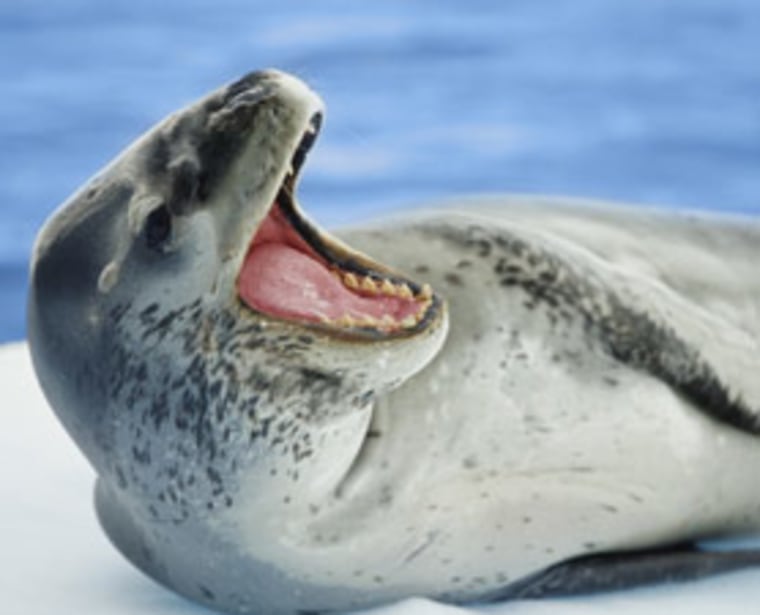One of the most elusive animals in Antarctica, the pack-ice loving leopard seal, is now being surveyed not by sight but by sound.
The leopard seals lead solitary lives in the dangerous pack ice of coastal Antarctica, and tend to shy away from humans. That's made studying their numbers and any details of their lives extremely difficult. By listening to the seals underwater, however, a team of scientists has found a way to not only count the individuals, but also extract other secrets of leopard seal life.
"We really have not a very clear idea what's happening in the marine environment," said marine mammal researcher Tracey Rogers of the University of New South Wales in Sydney, Australia. "There has been a great advance in acoustics. It opens up the marine environment."
Rogers is scheduled to present her leopard seal acoustic work at the meeting of the Acoustical Society of America in Baltimore on April 19.
Previously the seals were surveyed visually by air. But that provides only a quick snapshot and very little in the way of details. Sometimes visual surveys can even point researchers in the wrong direction, Rogers told Discovery News.
For instance, visual surveys have shown that there were some places with higher numbers of the seals than others. This suggested that the seals were hanging around a site with more food or some other resource. However, acoustics proved this wrong.
Rogers and her colleagues were able to listen in and discover that the higher concentrations of seals were actually juveniles. The youngsters were not gathering in good places, but were instead being crowded into less attractive areas by older, more dominant seals with established territories.
The team realized this after first identifying seals going in and out of the water and matching each seal to its song.
"They're very, very stylized in the singing patterns," Rogers explained.
What's more, their singing habits vary by the season. "During December (summer in Antarctica), they are singing all day," she said.
That's not to say that visual surveys have no value, says acoustical researcher Holger Klinck of Oregon State University.
"At some point, you need visual observations to ground truth," Klinck said. But for the day in, day out study of the lives of elusive species, visual observations are too brief and too dependent on things like clear weather and sunlight — both of which can be in short supply in Antarctica, he said.
Another advantage of acoustical surveys is cost.
"It's massively, massively cheaper than visual (surveys)," Rogers said, who even uses retired military sonar buoys that were originally designed for detecting submarines.
More sophisticated equipment is being employed by Klinck and his team, including special acoustic recorders that can ride on unmanned submarine gliders to survey whale populations. Although most of the acoustic work is focused on marine mammals, said Klinck, there is also work underway on Atlantic cod, North Pacific cod and even snapping shrimp.
